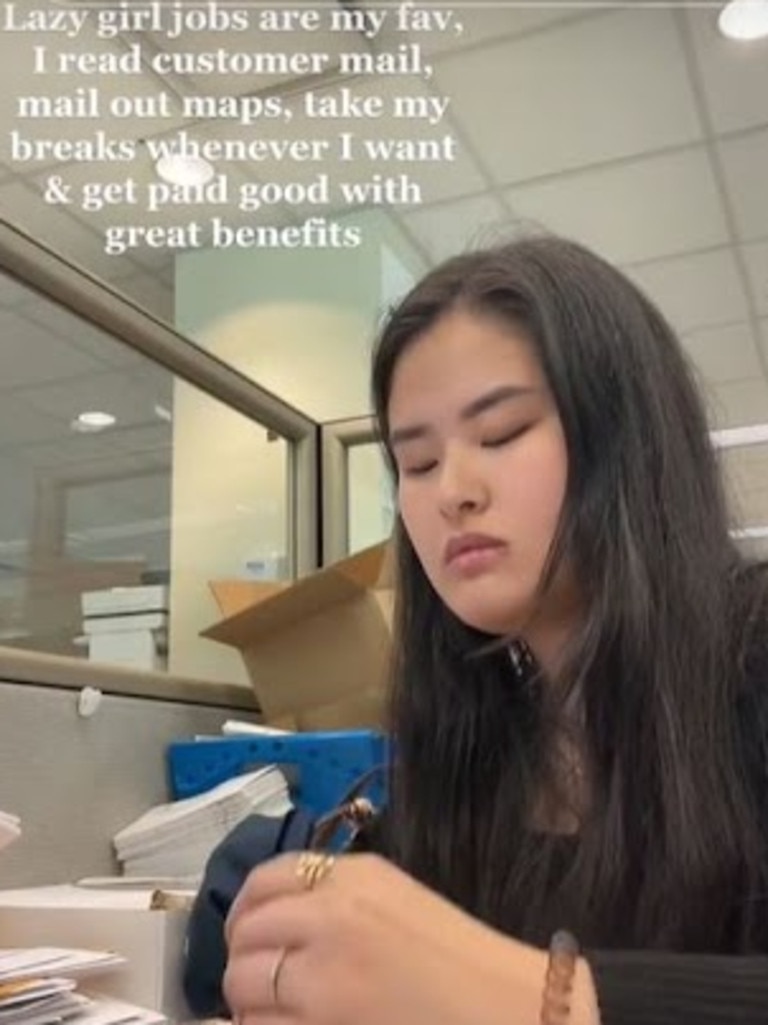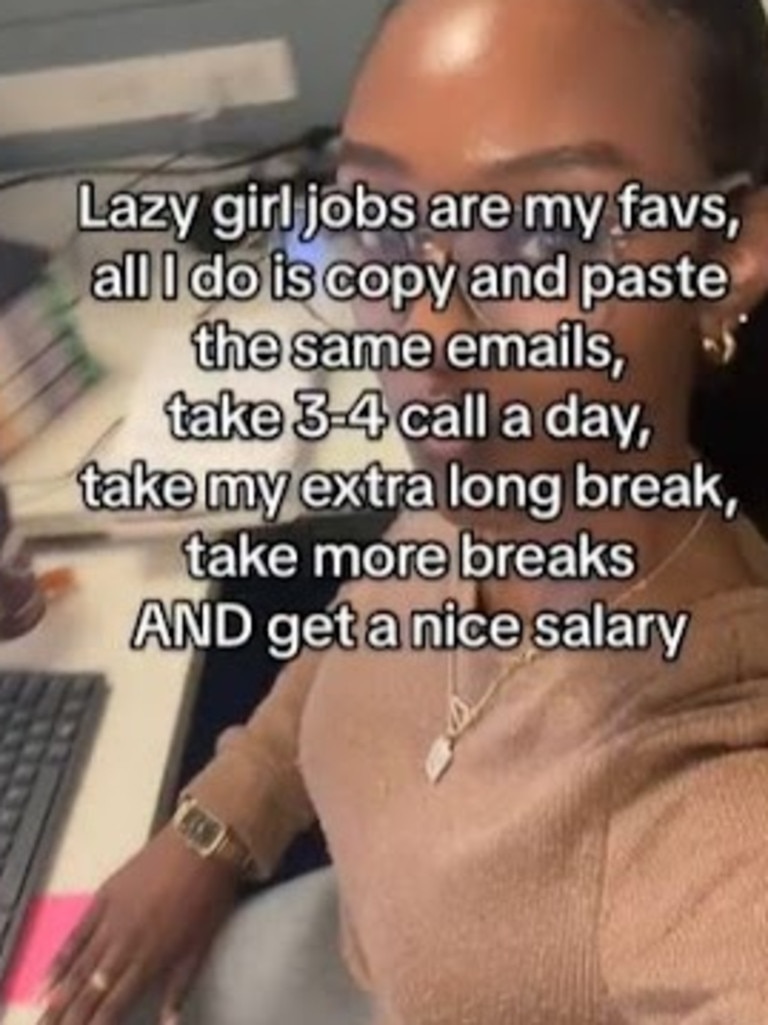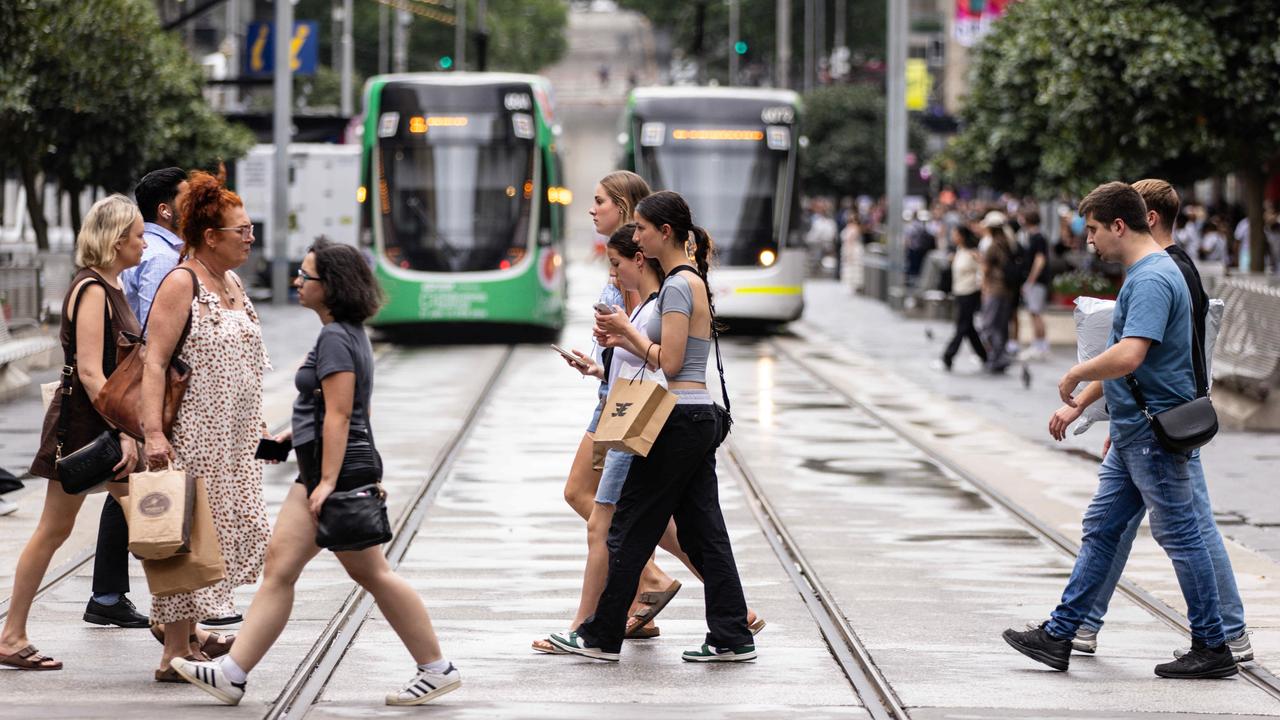Aussie women have revealed their ‘lazy girl’ jobs
Aussie women have revealed they don’t have to work hard to earn big bucks and some of them are finishing their working day before lunch.

Aussie women have revealed the ‘Lazy Girl Jobs’ they’ve secured and it is proof that Generation Z have broken up with hustle culture and are now in a monogamous relationship with doing less.
The ‘Lazy Girl Jobs’ concept went viral on TikTok earlier this year with the hashtag getting more than 14 million views.
It might sound wild but it is simply women sharing their jobs where they can put in minimum effort and still make a decent salary.
The internet is now full of Gen Z women – born between 1997 and 2012 – bragging about having a job where they only have to answer emails all day, just make a few phone calls or only really need to maintain a spread sheet.
Someone even described her ‘9 to 5’ gig as just “copy and paste.”


It’s a clear push back on the girl boss culture that millennial women fell hard for. Gen Z don’t want it all, they actually want less and they aren’t afraid to share that.
It also is not just an online myth.
In a popular Australian Facebook discussion group a woman admitted she had seen the trend all over her social media feed and wanted to know if anyone in the group had a lazy girl job and what they did.
The answers came rolling in.
One woman shared that she’d found the ultimately lazy girl job and she was bringing in the big bucks without burning herself out.
“I do the book keeping and organising for our business. I am on $140,000 a year for about 10 hours work a week. I’d say it’s classed as a lazy job because you don’t need to do a huge amount,” she shared.
Another woman revealed that she was “living the dream” because she’d secured a part-time role that offered a $64 hourly rate.
“My job is niche, I definitely work hard but I love what I do. I’m an illustrator and courtroom sketch artist for a major newspaper/television channel,” she wrote.
The illustrator added that the job was great because there was plenty of “waiting around” and she always had time to get lunch or coffee afterwards.


Another Aussie wrote that she found her job as a disability support worker the perfect lazy girl gig because of the benefits.
Sure, she pointed out that it could also be the “hardest” job but she said there were plenty of lazy perks that came with the well-paid job.
“Nothing beats siting with a client and watching television and having a cuppa with them or taking them on activities,” she wrote.
Someone else doubled down on the benefits of being a disability support worker and said that the job meant that she usually finished by lunch and was earning more than what did when she had a ‘9 to 5’ job.
“It leaves my time to go to the gym, do my shopping and lounge around the rest of the day to focus on any hobbies/socialising,” she wrote.
She said her job allowed her to enjoy a “very leisurely life” and have heaps of times for friends and family.
Someone else confessed that she had a lazy girl job for a solid decade by landing a government role working at a library.
“No stress, OK pay, nice customers. It was a wonderful job,” she bragged.
A traffic controller said some days she barely had to do any work and was still making decent coin.
“I stand at the gate letting a few work vehicles in and out and take no work home with me.”
Meanwhile a physiotherapist that worked in aged care declared it was the perfect lazy girl job.
“Flexible hours, flexible days, take oldies out on walks, slow stream rehab according to their goals. Side tasks include painting nails and drinking teas. I love it.”


The lazy girl trend was originated by Gabrielle Judge, 26, an American who describes the concept as a way to describe jobs with “work-life balance.”
So why the word lazy? Wouldn’t the bare minimum work trend make employers less anxious?
“I added ‘lazy’ into the term because Lazy Girl Jobs offer so much work-life balance it should feel as if you are almost operating at a lazy state when compared to the American Hustle culture,” she told news.com.au.
Angelica Hunt, senior marketing lead at diversity, equity, and inclusion consultancy The Dream Collective, said that the trend shouldn’t surprise anyone that was paying attention to what young women want.
“The Lazy Girl trend addresses an ever-growing misalignment between companies and individuals, where non-inclusive workplace cultures are no longer being accepted.”
Ms Hunt stressed that Gen Z were designing a working life that “works for them” and it was because they had witnessed Millennial and Boomer burnout.
“They’ve learned from their parents’ generation that pouring your whole life into work at the expense of all else may not be paying off.”
More Coverage
Interestingly, Ms Hunt doesn’t think the younger generation should change their thinking and start working harder.
Instead she said that “pinning” Gen Z as the generation that doesn’t want to work is missing the “opportunity to understand where they are coming from,” and the trend should be addressed head on.
“If we address it, we create better, more inclusive, and happier workplaces where people genuinely want to be – is that not beneficial for everyone?”






